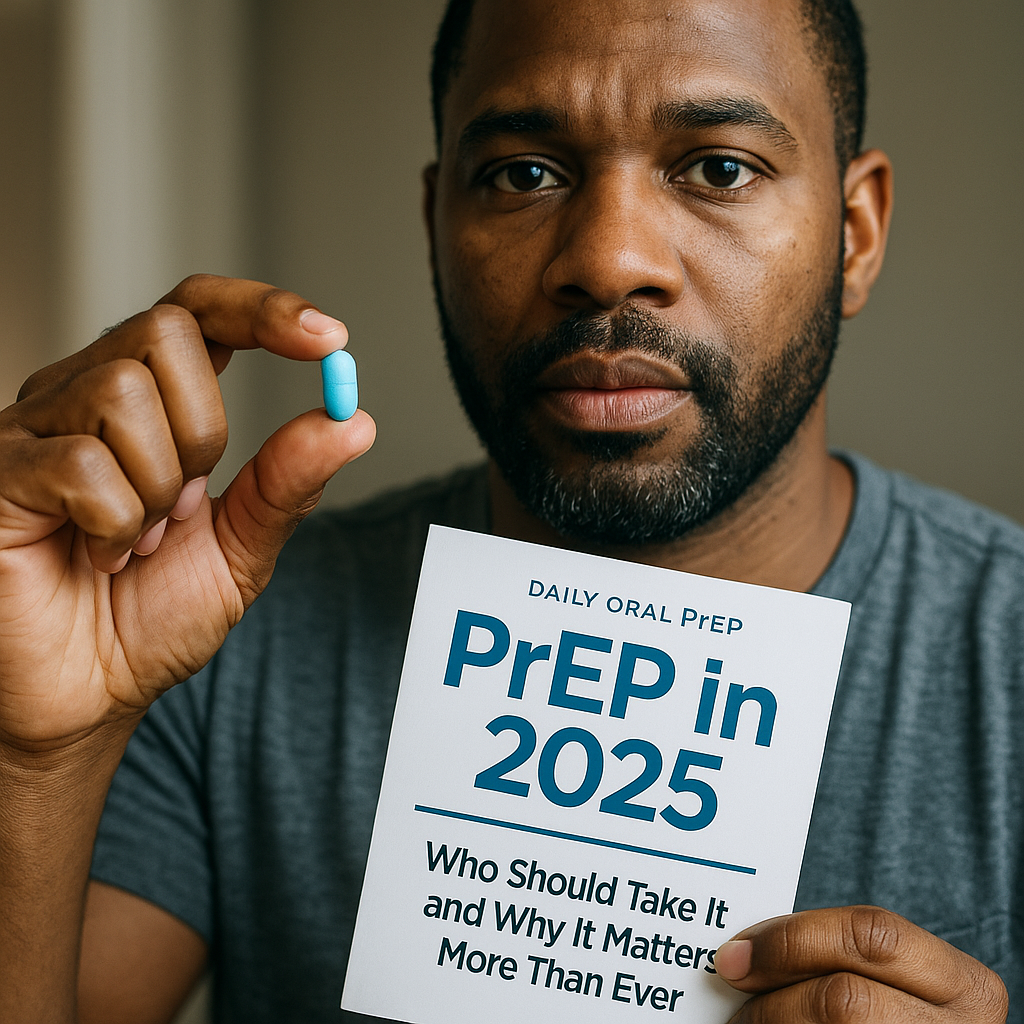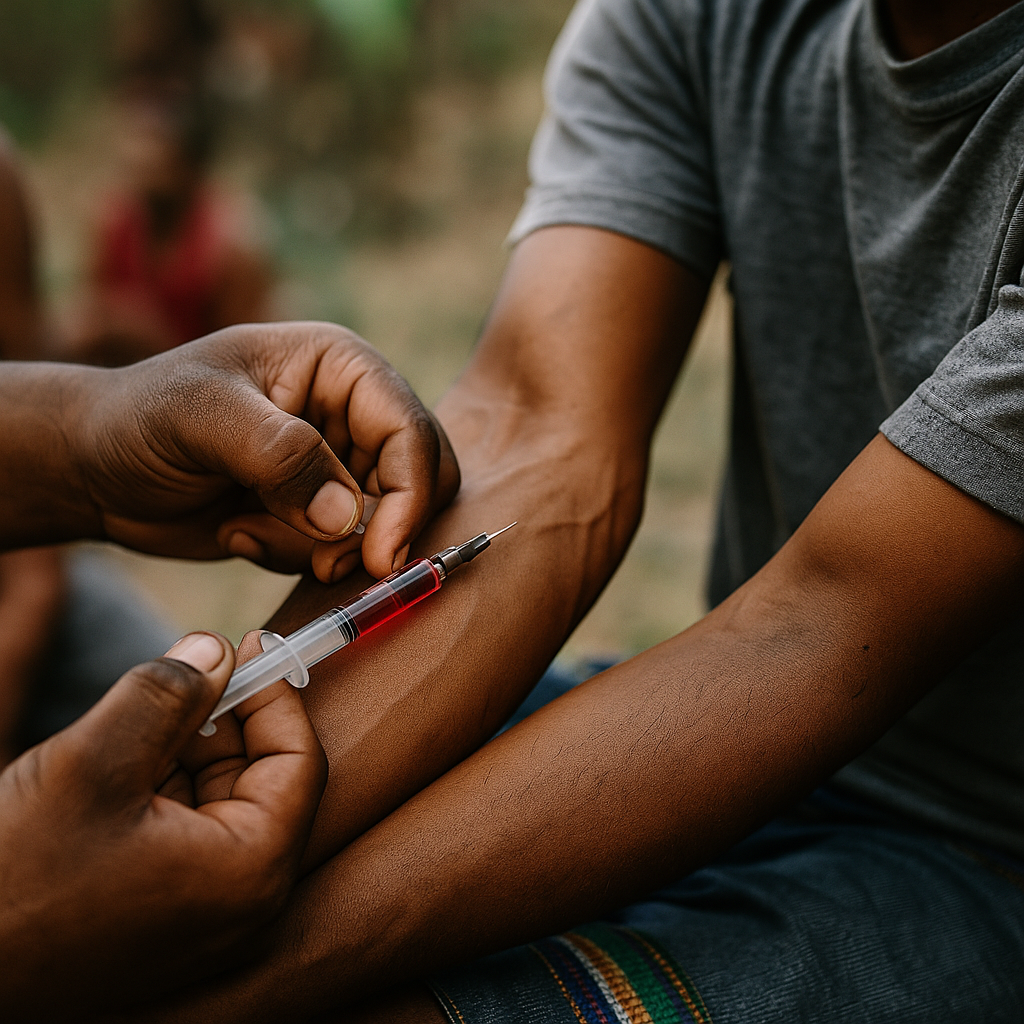
Imagine having a seatbelt for HIV prevention—one you can take proactively, before potential exposure. That’s what PrEP offers. But how does PrEP work, exactly? As awareness grows and science advances, more people are turning to pre-exposure prophylaxis as a powerful way to protect their health and prevent new infections.
In this guide, we’ll explain how PrEP prevents HIV, how to take it effectively, what medications are currently available, and who benefits most. Whether you’re exploring prevention for yourself or supporting someone at risk, understanding how PrEP works can be a game changer.
Table of Contents
- What Is PrEP and How Does It Work?
- Types of PrEP: Truvada, Descovy, and Injectable Options
- Who Should Consider Taking PrEP?
- How to Start and Stay on PrEP
What Is PrEP and How Does It Work?
PrEP, short for pre-exposure prophylaxis, is a medication regimen taken by HIV-negative individuals to reduce their risk of becoming infected with HIV. But how does PrEP work at the biological level? It essentially creates a barrier in your body’s immune system to block HIV from establishing a foothold if exposure occurs.
The most common form of PrEP is a daily pill that contains two antiretroviral drugs—emtricitabine and tenofovir disoproxil fumarate (sold as Truvada) or tenofovir alafenamide (sold as Descovy). These medications are also used in HIV treatment but, in PrEP, they are used preventively. When taken consistently, these drugs build up in the bloodstream and certain tissues. If HIV enters the body during sex or drug use, the medications prevent it from replicating.
Timing and consistency matter. According to the CDC, when taken daily, PrEP reduces the risk of HIV through sexual contact by about 99%. For people who inject drugs, it lowers the risk by at least 74%.
It’s worth noting that PrEP does not protect against other sexually transmitted infections (STIs) or unintended pregnancy. That’s why many providers recommend combining PrEP with condoms and regular STI screening for comprehensive protection.
Types of PrEP: Truvada, Descovy, and Injectable Options
There are now multiple options for individuals considering PrEP, each with distinct advantages depending on personal health needs and lifestyle. Understanding these choices is key to selecting the best path for protection.
Truvada was the first medication approved for PrEP and remains widely used. It’s recommended for people of all genders and has strong safety data. However, it may not be ideal for those with kidney concerns or low bone density.
Descovy is a newer alternative, approved for PrEP use in cisgender men and transgender women. It uses a different form of tenofovir (TAF instead of TDF), which results in lower drug concentrations in the kidneys and bones, reducing potential side effects. But Descovy has not been approved for use by cisgender women and people at risk through vaginal sex.
In 2021, the FDA approved Apretude (cabotegravir) as the first long-acting injectable PrEP. Administered once every two months, it offers an appealing alternative for those who struggle with daily pill-taking. It also provides privacy and reduces the risk of missed doses due to forgetfulness or stigma.
Each option has its pros and cons. That’s why speaking with a knowledgeable healthcare provider is essential. You can explore provider support through platforms like Healthcare.pro, which can connect you with clinicians who specialize in PrEP care.
Who Should Consider Taking PrEP?
PrEP isn’t for everyone—but it’s highly recommended for those with an elevated risk of HIV exposure. So, who fits that description?
According to guidelines from the CDC and WHO, PrEP is a good option for:
- People with a sexual partner who is HIV-positive and not virally suppressed
- Individuals who have multiple sex partners and don’t consistently use condoms
- Men who have sex with men (MSM)
- People who inject drugs and share needles
- Anyone who has been diagnosed with an STI in the past six months
While these are common categories, risk isn’t always visible. In fact, many individuals who could benefit from PrEP don’t realize they’re eligible. Culturally competent providers should approach this conversation without stigma and tailor risk assessment to each patient’s context.
Educational resources like AIDS.org offer user-friendly articles, FAQs, and links to PrEP navigators and support networks for those seeking more information.
How to Start and Stay on PrEP
Beginning PrEP involves a few initial steps that ensure safety and set the stage for long-term success. Most people start with a consultation to review risk factors, test for HIV, and check kidney function. This helps confirm that PrEP is appropriate and safe.
After starting the medication, it’s important to follow up with a healthcare provider every 3 months. These visits typically include:
- HIV testing
- STI screening
- Kidney function tests (especially for those on Truvada)
- A discussion of adherence, side effects, and any new health changes
Consistency is key. Skipping doses can reduce PrEP’s effectiveness and increase the risk of infection. To help stay on track, many people use pillboxes, phone reminders, or integrate PrEP into their daily routines—like taking it with breakfast or brushing teeth.
Injectable PrEP offers a solution for those who struggle with daily adherence. After an initial oral lead-in period, patients receive injections every 8 weeks, administered by a clinician.
For individuals exploring how to maintain daily habits or manage their routine, forums like health.healingwell.com provide peer support, practical tips, and encouragement.
Conclusion
So, how does PrEP work? It works by blocking HIV replication before it can take hold in the body. It works when taken consistently, whether as a daily pill or bimonthly injection. And most importantly, it works as part of a broader HIV prevention strategy that includes testing, communication, and community support.
The options for HIV prevention in 2025 are more powerful and flexible than ever before. By understanding the science behind PrEP and supporting personalized care, we can continue to lower infection rates and improve public health outcomes.
For more information and education on PrEP, HIV, and community wellness, visit AIDS.org.
FAQs
How does PrEP work to prevent HIV?
PrEP works by using antiretroviral drugs to block HIV from multiplying in the body after exposure. This prevents the virus from establishing an infection.
Is PrEP effective if I miss a dose?
PrEP is most effective when taken consistently. Missing occasional doses reduces its protection, especially for receptive partners. Injectable PrEP may be a better option for those with adherence challenges.
Which is better: Truvada or Descovy?
Both are effective. Truvada is approved for all genders, while Descovy may be better for kidney health but isn’t approved for vaginal sex exposure. Your provider can help determine the best choice.
How soon does PrEP start working?
For anal sex, PrEP reaches maximum protection in 7 days. For vaginal sex and injection drug use, 20 days of consistent use is recommended.
Is PrEP safe for long-term use?
Yes, with proper monitoring. Side effects are usually mild and temporary. Regular check-ins with your healthcare provider ensure safety.
Disclaimer:
This content is not medical advice. For any health issues, always consult a healthcare professional. In an emergency, call 911 or your local emergency services.



